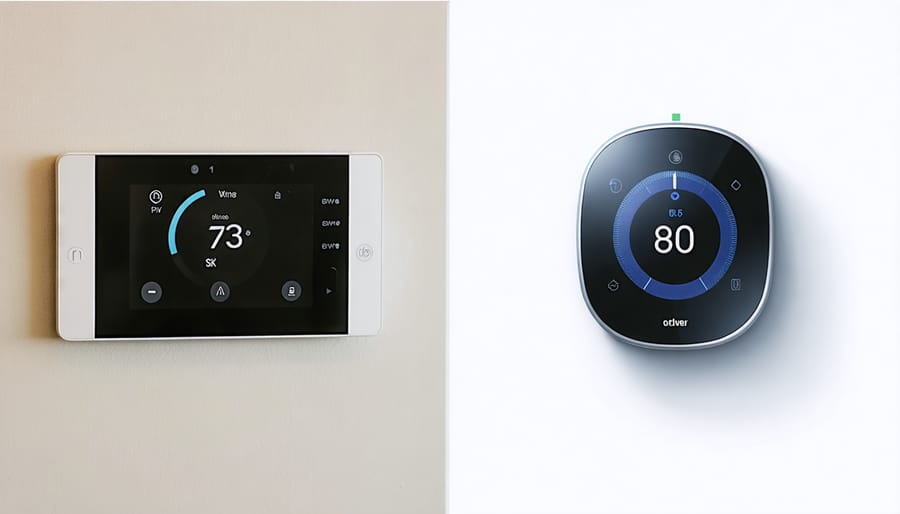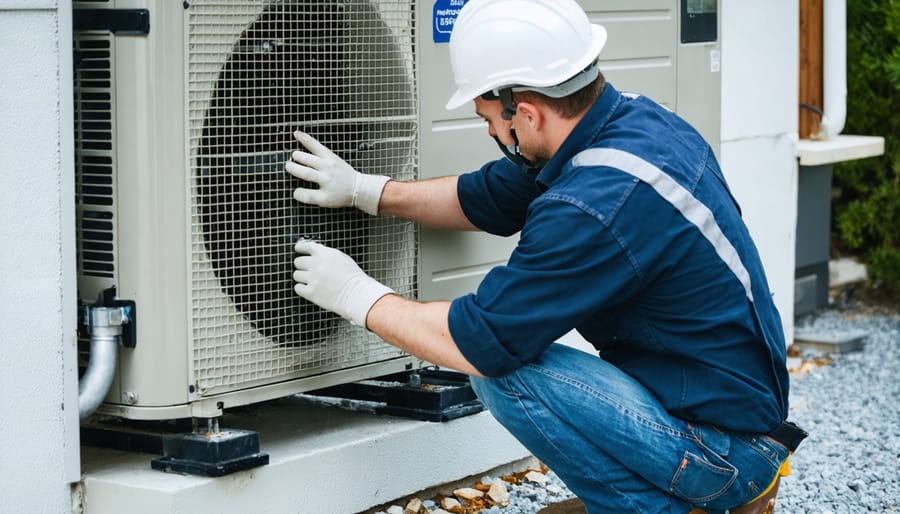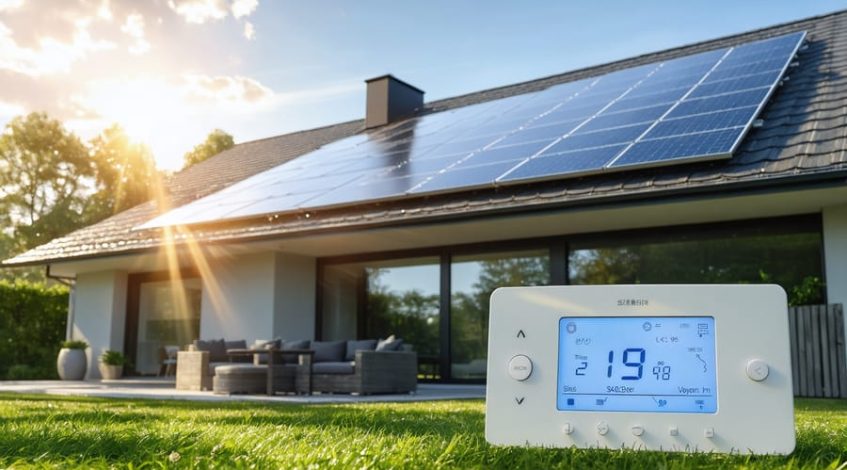Modernizing aging HVAC systems through strategic retrofits delivers up to 40% reduction in energy costs while extending equipment life by 10-15 years. Building owners face increasing pressure to optimize operational efficiency through smart energy management solutions, making HVAC retrofits a critical investment decision. Recent advances in retrofit technologies – from variable frequency drives to smart thermostats and energy recovery ventilators – now enable facilities to achieve substantial performance improvements without full system replacement. These upgrades not only enhance occupant comfort and indoor air quality but also help organizations meet increasingly stringent energy codes and sustainability targets. With proper planning and implementation, HVAC retrofits typically pay for themselves within 2-5 years through reduced utility bills, lower maintenance costs, and improved system reliability. Understanding available retrofit options and their specific applications empowers facility managers to make informed decisions that balance immediate capital costs against long-term operational savings.
Why Modern HVAC Retrofits Matter for Your Home
Energy Savings and ROI
HVAC retrofits typically deliver substantial energy savings, with most projects achieving 20-40% reduction in energy consumption. This translates to significant cost savings, making retrofits an attractive investment for property owners seeking home energy independence and reduced operational costs.
The return on investment (ROI) for HVAC retrofits varies based on several factors, including building size, existing system efficiency, and chosen improvements. Most building owners report ROI periods of 2-5 years, with some high-efficiency upgrades paying for themselves even sooner through utility savings and available incentives.
For example, a typical commercial building implementing comprehensive HVAC retrofits might invest $100,000 but save $30,000 annually in energy costs. When combined with utility rebates and tax incentives, which can cover 20-30% of project costs, the financial benefits become even more compelling.
Modern retrofits also provide additional value through improved system monitoring, predictive maintenance capabilities, and extended equipment life, further enhancing the long-term return on investment.
Comfort and Air Quality Benefits
HVAC retrofits significantly enhance indoor comfort and air quality, delivering benefits that extend beyond energy savings. Modern HVAC upgrades incorporate advanced temperature control systems that eliminate hot and cold spots throughout buildings, ensuring consistent comfort in all areas. These improvements also enable better humidity management, maintaining optimal levels between 30-50% for occupant well-being.
Air quality improvements come from upgraded filtration systems that effectively remove airborne pollutants, allergens, and particulate matter. Many retrofit solutions include MERV-13 or higher-rated filters, which can capture up to 98% of airborne particles, including bacteria and virus carriers. Advanced ventilation systems introduced during retrofits increase fresh air circulation, reducing CO2 levels and creating a healthier indoor environment.
Smart sensors and controls, often included in retrofit packages, continuously monitor air quality parameters and adjust system performance accordingly. This real-time adaptation ensures optimal indoor air quality while maintaining energy efficiency. For facilities with specific requirements, such as healthcare settings or manufacturing environments, HVAC retrofits can be customized to meet stringent air quality standards while improving overall occupant comfort and productivity.
Top HVAC Retrofit Technologies for Maximum Efficiency

Smart Thermostats and Controls
Modern smart thermostats and control systems represent a significant advancement in HVAC technology, offering unprecedented levels of efficiency and control. These intelligent systems leverage advanced algorithms, remote accessibility, and data analytics to optimize building comfort while minimizing energy consumption.
Smart thermostats learn from occupancy patterns and user preferences to automatically adjust temperature settings throughout the day. Many systems incorporate multi-zone control capabilities, allowing different areas of a building to maintain independent temperature settings based on specific needs and usage patterns. This targeted approach can reduce energy waste by up to 20% compared to traditional single-thermostat setups.
Integration with building automation systems (BAS) enables comprehensive control over HVAC operations. Features like occupancy sensors, predictive maintenance alerts, and real-time energy monitoring provide facility managers with valuable insights for optimizing system performance. Mobile applications allow remote monitoring and adjustment of settings, ensuring optimal comfort and efficiency even when off-site.
Advanced controls also facilitate demand response programs, enabling participation in utility incentives by automatically adjusting HVAC usage during peak demand periods. Many systems can integrate with weather forecasting services to proactively adjust settings based on upcoming weather conditions, further enhancing efficiency.
The ROI for smart control upgrades typically ranges from 1-3 years, with benefits including reduced energy costs, improved occupant comfort, and simplified facility management. These systems also provide detailed usage reports and analytics, helping identify additional opportunities for optimization and savings.
High-Efficiency Heat Pumps
High-efficiency heat pumps represent a significant advancement in HVAC technology, offering superior energy performance compared to traditional heating and cooling systems. These systems work by transferring heat between indoor and outdoor environments rather than generating it through combustion, resulting in energy savings of 30-60% compared to conventional systems.
Modern heat pumps are particularly effective in moderate climates but have evolved to perform efficiently even in extreme temperatures. Variable-speed compressors and advanced defrost cycles enable these systems to maintain comfort levels while minimizing energy consumption. The latest models can operate effectively in temperatures as low as -13°F (-25°C), making them viable options for most geographical locations.
For retrofit applications, heat pumps offer remarkable flexibility. They can be installed as direct replacements for existing forced-air systems or integrated with existing ductwork. Ductless mini-split configurations provide additional installation options for buildings without existing air distribution systems.
The financial benefits are compelling, with many facilities reporting payback periods of 3-7 years through reduced operational costs. Additionally, numerous utility companies and government programs offer incentives for heat pump installations, further improving the return on investment.
When selecting a heat pump system, it’s essential to consider factors such as the building’s insulation levels, local climate conditions, and existing HVAC infrastructure. Professional load calculations ensure proper sizing and optimal performance, maximizing both comfort and efficiency benefits.

Ductwork Optimization
Optimizing existing ductwork systems is a crucial component of HVAC retrofits that can significantly improve system efficiency and reduce operating costs. A comprehensive ductwork optimization typically begins with a thorough inspection and testing to identify leaks, poor insulation, and airflow restrictions.
Common optimization strategies include sealing duct leaks using mastic sealant or metal-backed tape, which can reduce air loss by up to 30%. Properly insulating ductwork, especially in unconditioned spaces like attics and crawl spaces, prevents thermal losses and increases system efficiency. Installing or repositioning dampers helps balance airflow throughout the building, ensuring consistent temperature distribution across all zones.
Modern diagnostic tools, such as duct blaster tests and thermal imaging, enable precise identification of problem areas. These assessments often reveal opportunities for redesigning duct layouts to minimize sharp bends and long runs that create resistance to airflow. In some cases, installing larger ducts or adding return air pathways can dramatically improve system performance.
For commercial buildings, the installation of smart dampers and zone control systems allows for dynamic airflow adjustment based on occupancy patterns and thermal loads. This automated approach can reduce energy consumption by 15-30% while improving occupant comfort.
Regular maintenance of optimized ductwork, including cleaning and inspection, ensures long-term performance benefits and extends the life of the entire HVAC system.
Implementation Steps and Best Practices
Energy Assessment and Planning
A successful HVAC retrofit begins with a comprehensive evaluation of your current system’s performance and efficiency. This assessment phase involves collecting detailed data about energy consumption patterns, system operation hours, and maintenance history. Professional auditors use sophisticated energy assessment tools to measure key performance indicators and identify specific areas for improvement.
During the planning phase, focus on establishing clear objectives for your retrofit project. Consider factors such as desired energy savings, indoor air quality requirements, and occupant comfort levels. Building operators should analyze historical utility bills, conduct thermal imaging surveys, and perform airflow measurements to create a baseline for comparison.
The assessment should also include a thorough examination of existing ductwork, control systems, and building envelope performance. This information helps identify potential issues that could impact the effectiveness of new HVAC components. Consider seasonal variations in energy demand and how they affect system performance throughout the year.
Create a detailed implementation timeline that minimizes disruption to building operations. Factor in equipment lead times, installation schedules, and commissioning requirements. Prioritize improvements based on potential energy savings, implementation costs, and available incentives or rebates. This systematic approach ensures that your retrofit project delivers maximum value while meeting your organization’s operational and sustainability goals.
Professional Installation Considerations
Selecting the right HVAC professionals for your retrofit project is crucial for ensuring optimal results and long-term system performance. Look for contractors with specific experience in retrofit installations, as these projects often present unique challenges compared to new construction installations. Verify that potential contractors hold current certifications from recognized industry organizations and maintain proper licensing and insurance coverage.
Request detailed project proposals that include comprehensive system specifications, timeline estimates, and clear cost breakdowns. Professional contractors should conduct thorough site assessments, including load calculations and ductwork evaluations, before providing recommendations. They should also be willing to explain their approach to minimizing disruption during installation and their plans for addressing potential complications.
Consider the contractor’s familiarity with local building codes and energy efficiency regulations, as these can significantly impact project implementation. Ask about their experience with similar buildings and their track record with energy-efficient upgrades. Quality contractors will provide references and case studies from comparable projects.
Ensure the installation team has a clear plan for system commissioning and testing after installation. This should include proper calibration of controls, airflow testing, and verification of system performance metrics. Additionally, discuss ongoing maintenance requirements and whether the contractor offers service agreements to maintain system efficiency over time.
The most qualified professionals will also guide you through available energy efficiency incentives and help document the retrofit process for potential rebate applications.
Real World Success Story: The Johnson Family Retrofit
The Johnson family of suburban Denver faced a common challenge: an aging HVAC system that was driving up their energy bills and failing to maintain consistent comfort throughout their 2,800-square-foot home. After consulting with HVAC specialists, they decided to implement a comprehensive retrofit solution in 2021.
Their existing 15-year-old system was replaced with a high-efficiency variable-speed heat pump, complemented by smart zoning controls and updated ductwork. The project also included the installation of a smart thermostat system and sealed duct improvements to minimize air leakage.
The results were remarkable. According to their energy cost reduction data, the Johnsons saw a 45% decrease in their monthly heating and cooling costs within the first year. The new system paid particular dividends during peak summer months, when their energy consumption dropped by over 50% compared to previous years.
Beyond the financial benefits, the family reported significant improvements in comfort levels throughout their home. The smart zoning system eliminated previous hot and cold spots, while the variable-speed technology maintained more consistent temperatures and improved humidity control.
The retrofit also addressed indoor air quality concerns. The addition of a whole-house air filtration system has notably reduced allergy symptoms for their teenage daughter, who suffers from seasonal allergies.
The total investment for the retrofit was $14,500, but with available utility rebates and tax incentives, the net cost came to $11,200. Based on their current savings rate, the Johnsons expect to recoup their investment within 6-7 years, while enjoying improved comfort and air quality immediately.
Their success has inspired several neighbors to pursue similar upgrades, demonstrating how one well-executed retrofit can influence community-wide energy efficiency improvements.

HVAC retrofits represent a critical investment in your building’s future, offering substantial returns through improved energy efficiency, reduced operational costs, and enhanced occupant comfort. As we’ve explored throughout this guide, successful retrofits combine careful planning, strategic implementation, and ongoing optimization to achieve maximum benefits.
The key to a successful HVAC retrofit lies in taking a comprehensive approach. Begin with a thorough assessment of your current system’s performance, identify specific areas for improvement, and select appropriate solutions that align with your building’s unique requirements and budget constraints. Remember that modern retrofit options range from simple control upgrades to complete system overhauls, each offering different levels of investment and returns.
Consider phasing your retrofit project to manage costs effectively while minimizing disruption to building operations. Work with qualified professionals who understand both traditional HVAC systems and emerging technologies to ensure optimal results. Take advantage of available incentives, rebates, and financing options to make your retrofit more financially feasible.
The time to act is now. With rising energy costs and increasing emphasis on sustainability, HVAC retrofits offer a practical path to improved building performance and reduced environmental impact. By implementing these upgrades, you’re not just investing in your building’s infrastructure – you’re investing in its long-term value and sustainability.
Take the first step today by conducting an energy audit and consulting with HVAC professionals to develop a retrofit strategy that works for your facility.

